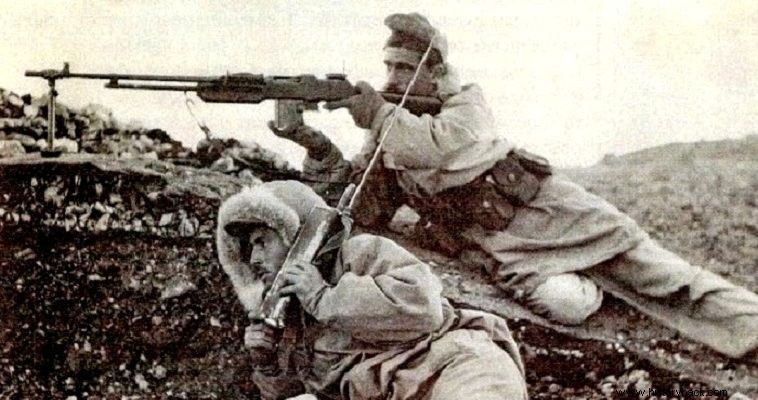
In April 1948 the guerilla war was in full swing in the Greek mountains. In Agrafa, the rebels of the Democratic Army of Greece (DSE) attacked the village of Kallifoni and after neutralizing the guard they went down to the plain reaching the gates of Karditsa.
TOY PANTELI D. KARYKA
The 3rd Assault Squadron was ordered to rush to the area to deal with the situation. The Squadron was given absolute initiative of movements as to how and where it would strike the enemy. However, instead of launching operations from the plain of Karditsa, the Squadron decided to attack the enemy in his nest, in the unfathomable, as he believed, Agrafa.
Thus he planned a raiding operation in the village of Mastrogianni (today's Amarantos) of Agrafon where, according to information, an elite company of DSE saboteurs was stationed. However, the brigade of Amarbei (Theodoros Kallinos) with three battalions was also moving in the area, while another six battalions of the Roumelis Headquarters were nearby.
Consequently, the 3rd Squadron had to move carefully or risk being confronted by very strong enemy forces and destroyed. Another problem that arose was that many men fell ill and developed a high fever. Despite this, the business developed normally.
Night march and ambush
The Squadron moved on the night of April 12th to 13th from the village of Kallifoni to Mastrogianni. Instead of the usual route, in order not to be detected, he moved along difficult paths so as not to be detected by DSE guards and patrols. Her men, drenched by the rapid rain that fell continuously, finally arrived at the dawn of April 13 at the heights around Mastrogiannis.
The commandos did not move. They developed outposts around the perimeter and observed the movements of the enemy. They located DSE outposts at a distance of 300 m from their positions and so it was decided that the Squadron should remain in their positions, concealed, at such a short distance from the enemy all day, with a view to attack by surprise at night, having gathered intelligence of the enemy.
The commandos remained silent for hours, almost motionless in their positions, hidden by the bushes and vegetation. The rebels of the DSE did not understand the slightest. At 23.00 at night observers reported that small groups of rebels were approaching. Squads of commandos were immediately sent to the passes and without firing a single shot captured the insurgents who, when interrogated, confessed the exact location of the saboteur company and all useful and necessary details.
At about midday on April 14th observers alerted the Squadron that a force of 4 insurgents with pack animals was approaching their positions moving across the plain. It was the saboteur company. Immediately two Mountain Commando Companies (MOCs) of the Squadron moved to cut off the rebels.
The commandos moved along a difficult but covered route without being noticed. When the trap was sprung they attacked with ferocity. The battle lasted only a few minutes. Those rebels who were not killed laid down their arms and surrendered. Few managed to escape. At least 17 rebels were killed in the conflict.
The surprise was complete and the victory important mainly in the psychology of the two opponents. The rebels did not expect such a blow and after that they did not dare to approach the plain of Karditsa again while the 3rd Squadron was in the area. On the other hand, the success raised the morale of the hard-fighting men of the Greek Army.
